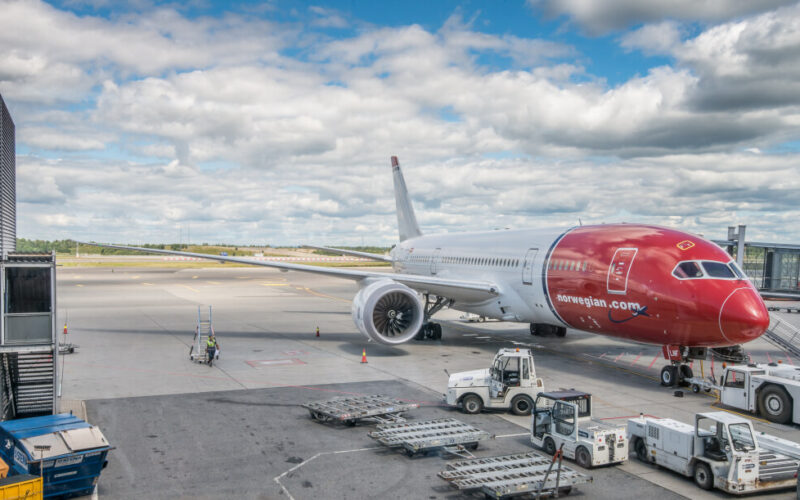As time passed on, the picture was becoming more and more clear: the impact of COVID-19 would be like no other to the aviation industry.
In part, aviation suffered from its own success. With more cities connected throughout the world than ever before and the coronavirus, which spreads like wildfire, the combination of the two factors has resulted in a world never seen before: empty. Abandoned city squares, monuments, museums, parks and airports point to a disconnected globe. And a disconnected globe means that the industry that relied on connecting the dots can no longer do so.
However, airlines still have bills to pay. Playing a crucial role in the global economy, the companies almost universally have asked their base governments to provide financial assistance in various forms, whether it would be government-backed loans, additional investment or potentially delaying tax payments, carriers begged for help. Lawmakers also realized the crucial role that airlines play in the well-being of the economy and were more than open to provide assistance.
Norwegian Air Shuttle was no exception. The Norwegian government prepared a $587 aid package (NOK6 billion) that was split into two: $276 million (NOK3 billion) was dedicated to Norwegian, while the other half went to help SAS and Widerøe.
A very weak financial position
However, the low-cost carrier was in an objectively worse position than the other two companies. Prior to receiving the aid, in the form of a state loan guarantee, the company had to ensure it could get 10% of the sum from commercial parties. Norwegian managed to do so on March 24, 2020, when two “Nordic banks have obtained credit committee approval to provide a guarantee for the required” 10% for the first payment of $27 million (NOK300 million).
“Norwegian will secure the necessary headroom to pursue further guarantees from the Norwegian Government,” stated the press release, which announced the successful start to obtain the additional liquidity from the government. Headroom was little-to-none: as of December 31, 2019, Norwegian had liquidity equal to 7% of its total 2019 revenue. The airline had cash not to fly for 26 days, the least out of all the airline groups in Europe, stated Centre of Aviation (CAPA) data. Drastic measures were taken up to cut costs, including the fact that the airline canceled 85% of its flights and temporarily lay off 7,300 employees.
Even prior to the coronacrisis, Norwegian had severe financial difficulties. After rapidly growing its route network throughout the world, including a subsidiary in Argentina, the airline hit a wall and had to take a step back. Ballooned costs and resilient competition resulted in less than desirable financial results for the airline: since 2017, the airline has failed to post a yearly profit since 2017. A cost-cutting program resulted in $225 million (NOK2.3 billion) reduction in costs in 2019. In addition, the airline had to sell 22 aircraft, its Argentine subsidiary and sold shares in Norwegian Finance Holding just to raise cash and to keep operations running.
The game of bets
Not to strain its positions and not to be forced to increase capacity against its own wishes, Norwegian also deferred aircraft deliveries. The all-Boeing airline is yet to receive 97 aircraft from the manufacturer: 92 Boeing 737 MAX and five Boeing 787 Dreamliners, according to the plane maker’s data. The low-cost carrier indicated in a recent investor’s presentation that it planned to scale back its fleet to 149 aircraft by Q2 2020: a significant decrease from the 164 jets that the airline started 2019 with. The timing could not be more right. As global passenger demand that has plummeted, the extra aircraft certainly would not have helped to stabilize Norwegian’s financial position.
However, its latest traffic report pointed to a bet, which unlike the deferred deliveries, went wrong. The low-cost carrier, which saw its March capacity, measured in Available Seat Kilometers (ASK) drop by 53% compared to the same month in 2019 to 3.8 billion, and demand in Revenue Passenger Kilometers (RPK), drop by 60% to 2.7 billion, announced an estimated loss of $104 million (NOK1.067 billion) in Q1 2020 alone due to fuel hedging.
Norwegian, which hedged 132,000 metric tons of jet fuel at $577 per metric ton, saw its hedges burn. Jet fuel prices tanked to $236 per metric ton as of April 3, 2020, according to International Air Transportation Association (IATA) data. That is a drop of 63.8% compared to the corresponding period last year. The airline bet that prices would rise. But a conflict between Russia and Saudi Arabia, which resulted in an oil price war between the two, and plummeting demand for black gold around the world saw its price burn to levels unseen since the Great Depression, reported Marketplace.
For the airline, the coronacrisis could not end sooner. Not only because the company’s main customers are essentially banned from traveling due to government-imposed restrictions, but also because it hedged its fuel at a very steep price further down the line. In Q2 2020, the airline hedged 161,000 metric tons of fuel at $574 per metric ton. Moving further, Norwegian indicated that post-Q2 2020, the company hedged 153,000 metric tons at $560 per metric ton.
If oil prices do not pick up, the airline’s costs would balloon out of control. The time for expenses to spiral is not an ideal one, to say the least: with an already fragile position and the rivers of cash drying out due to the outbreak of COVID-19, the future of Norwegian, once again, is in jeopardy.

